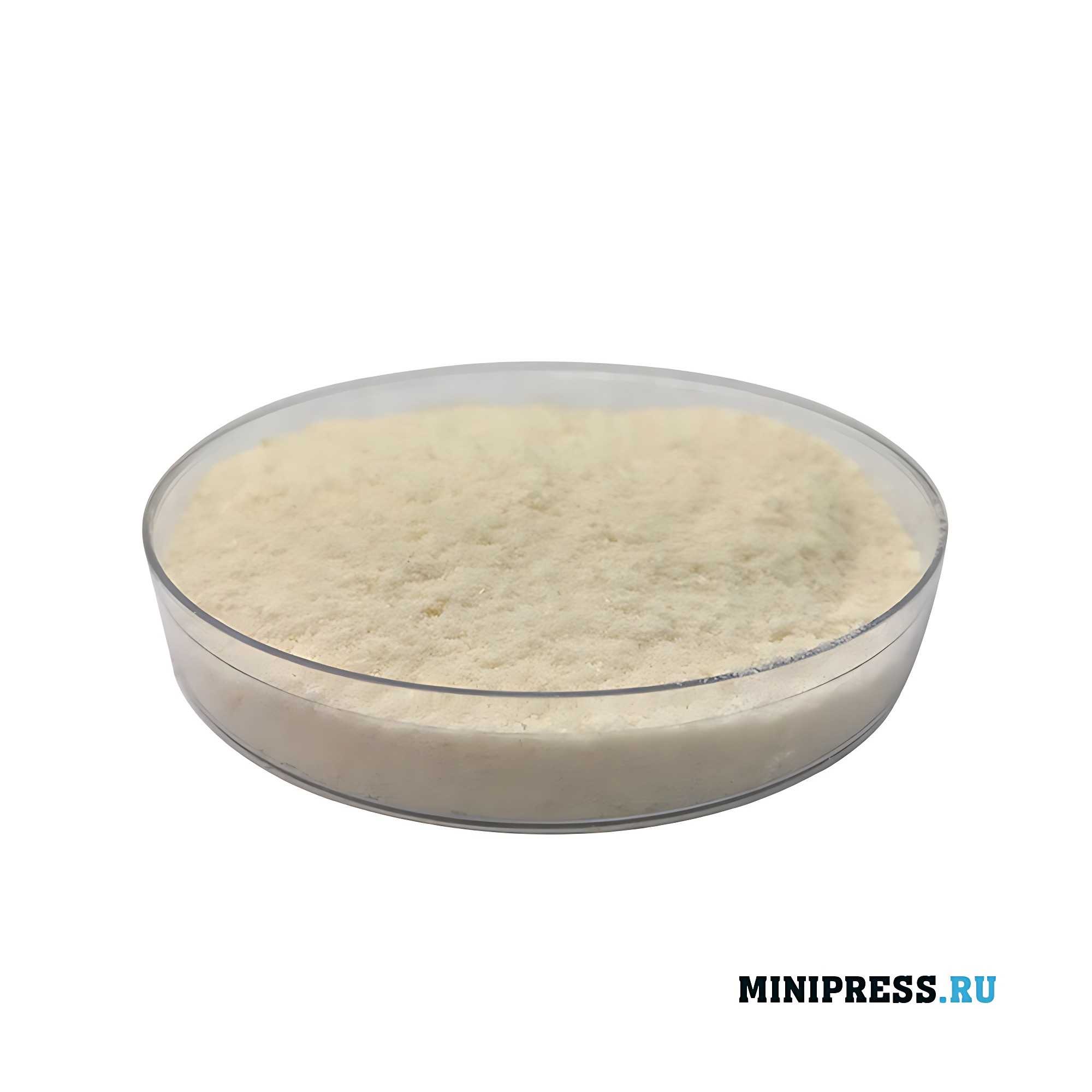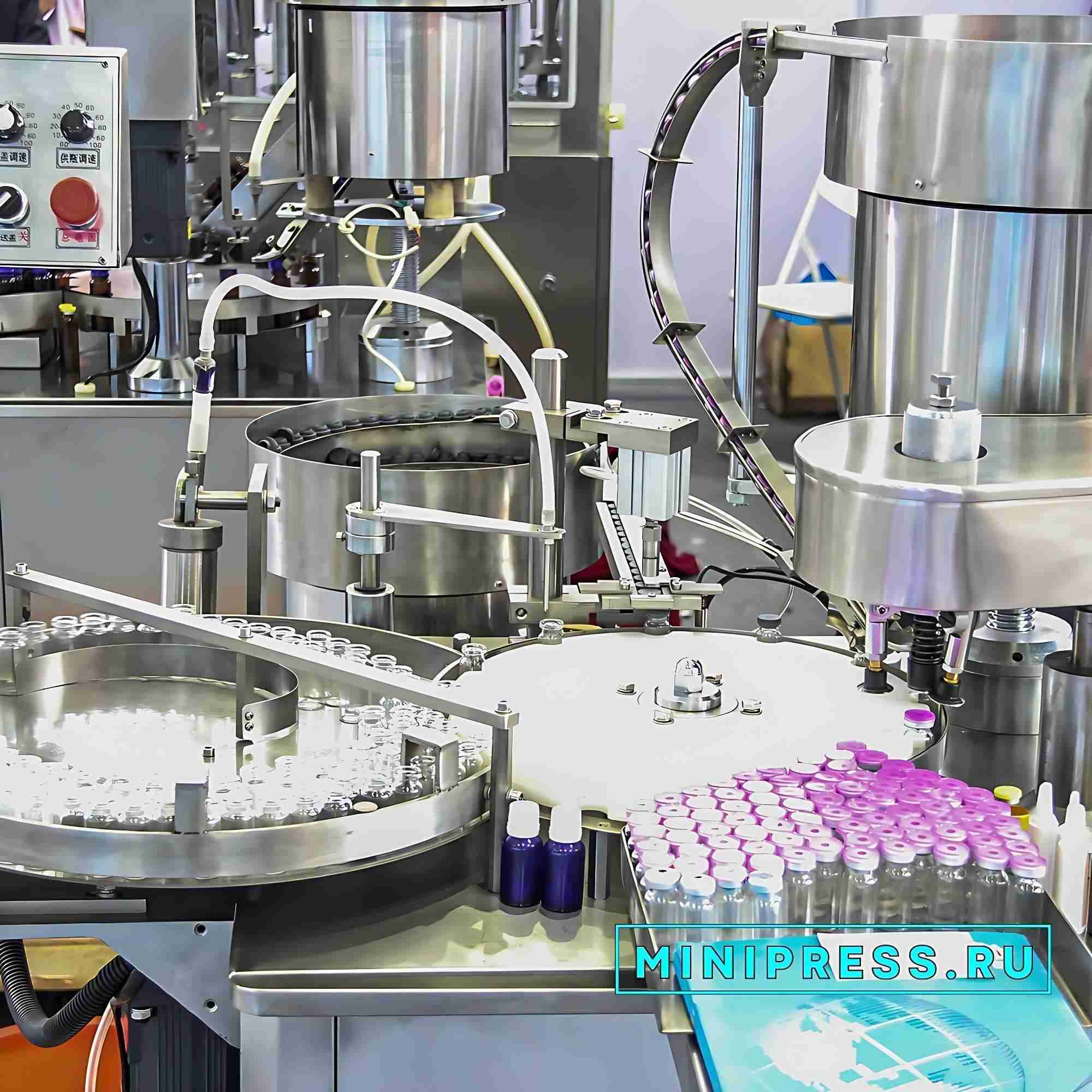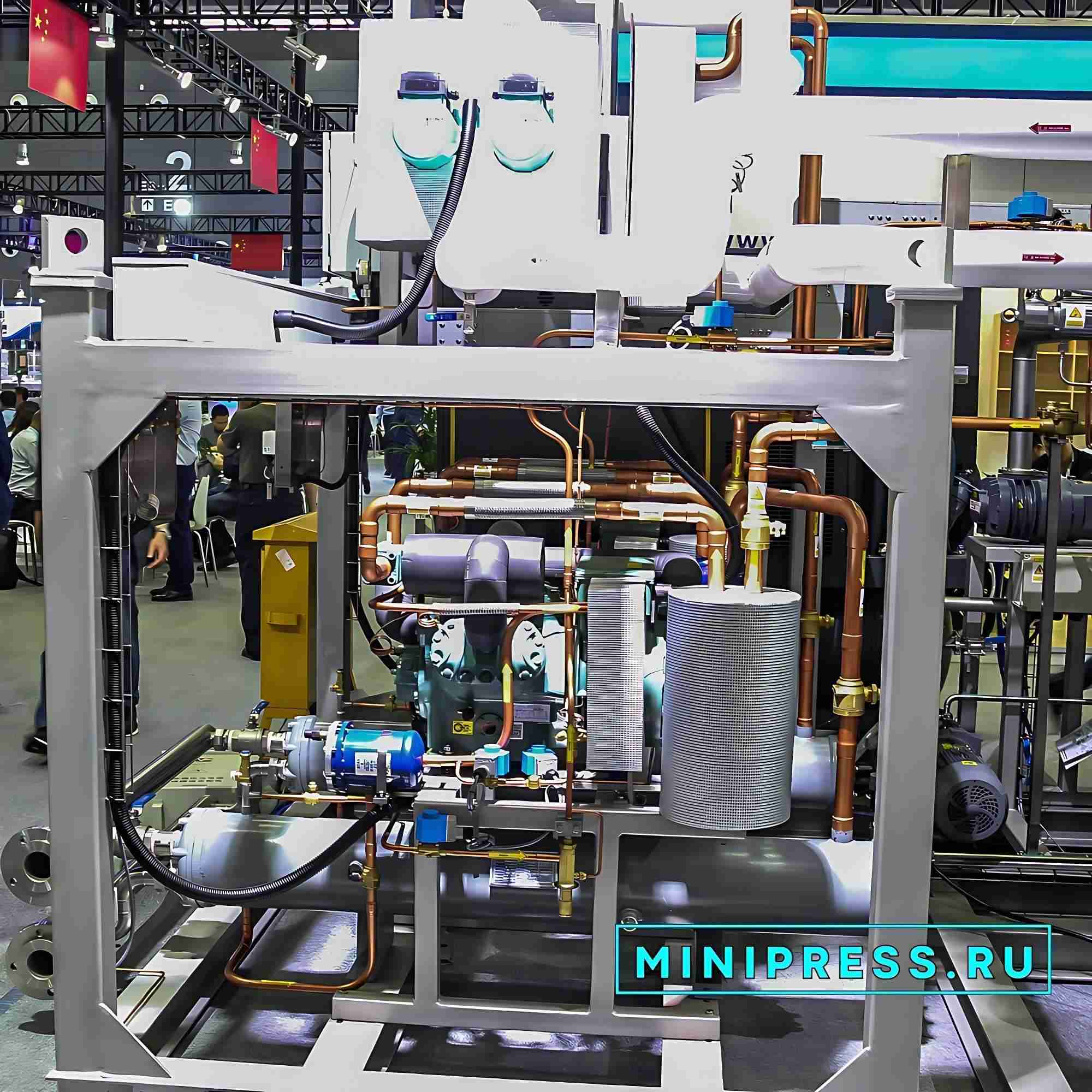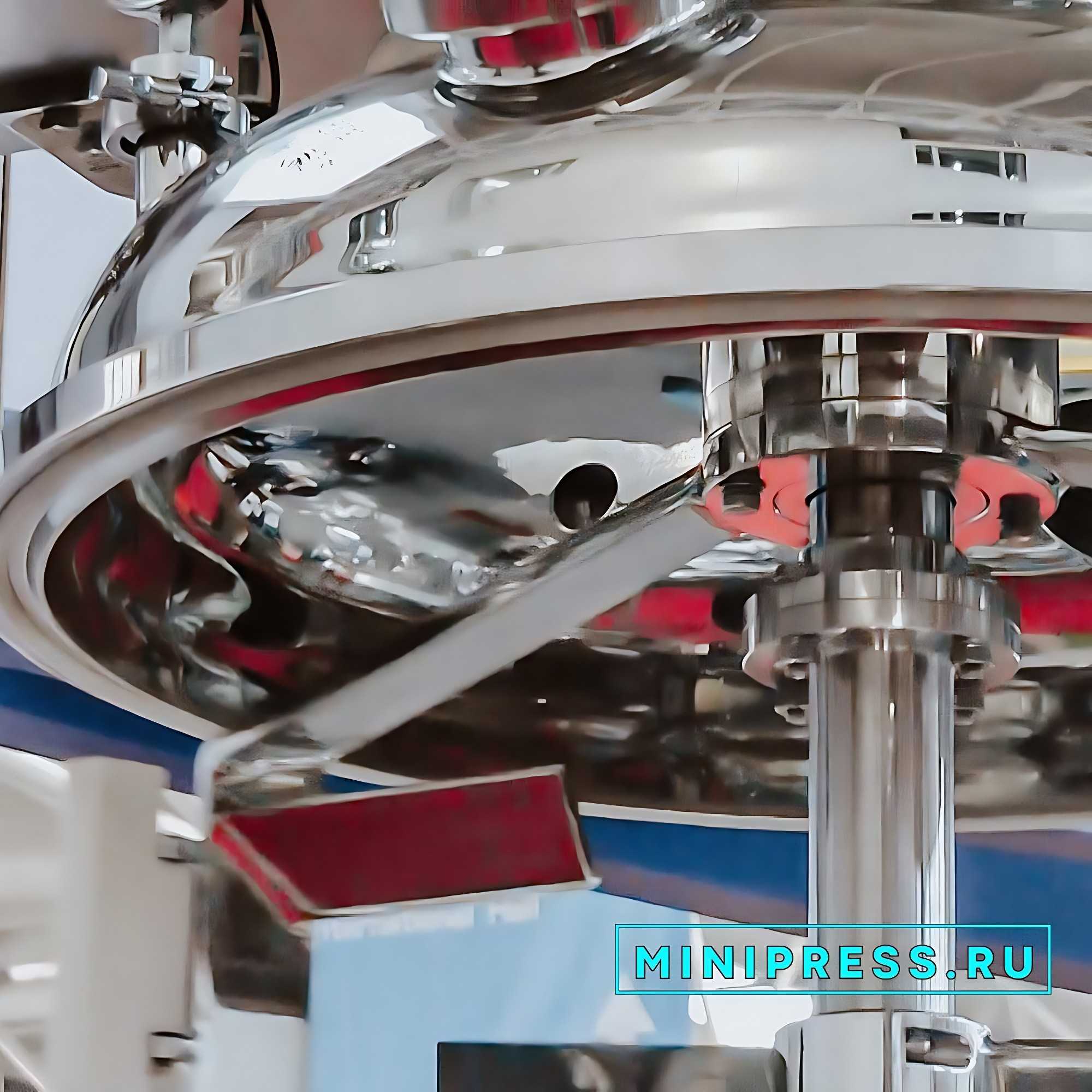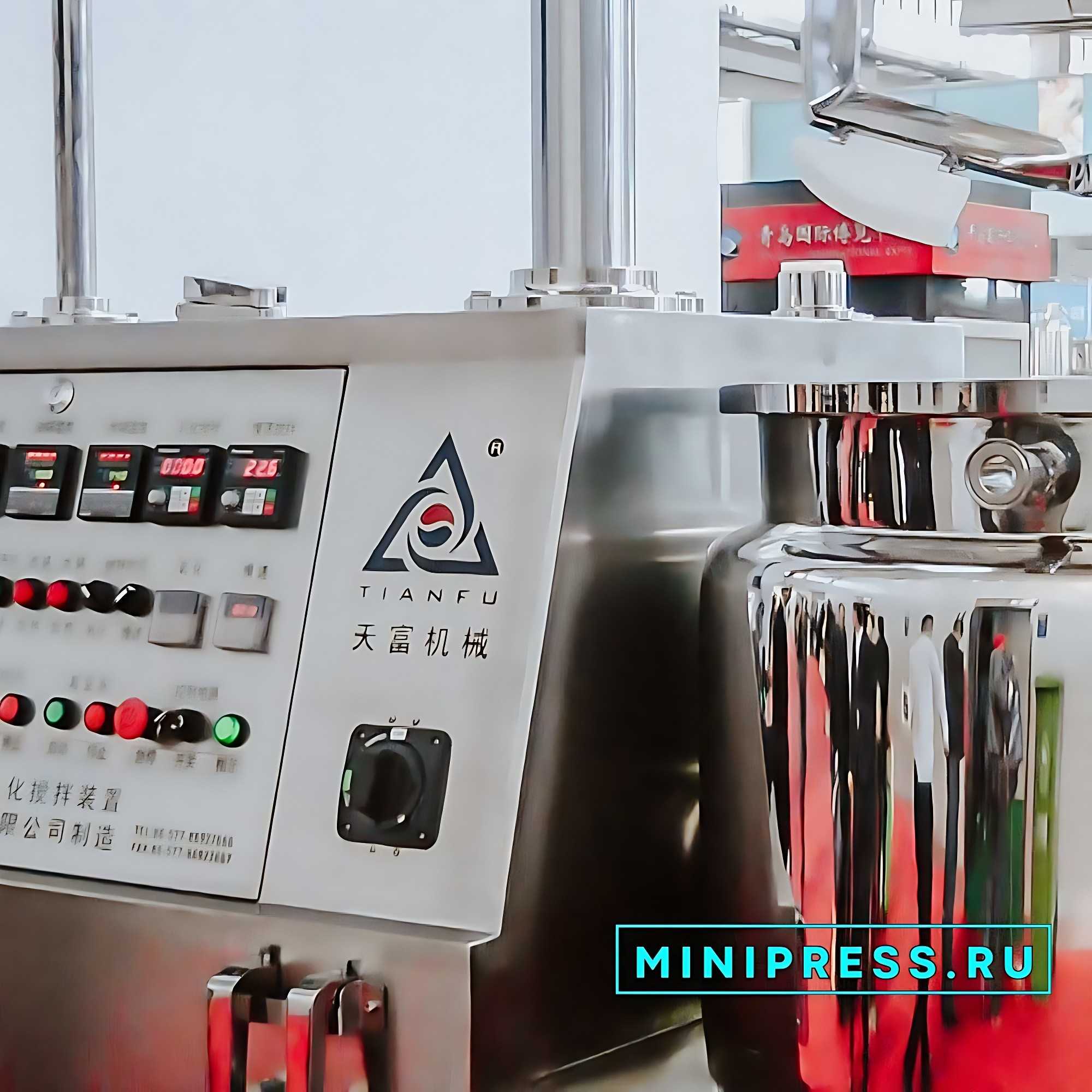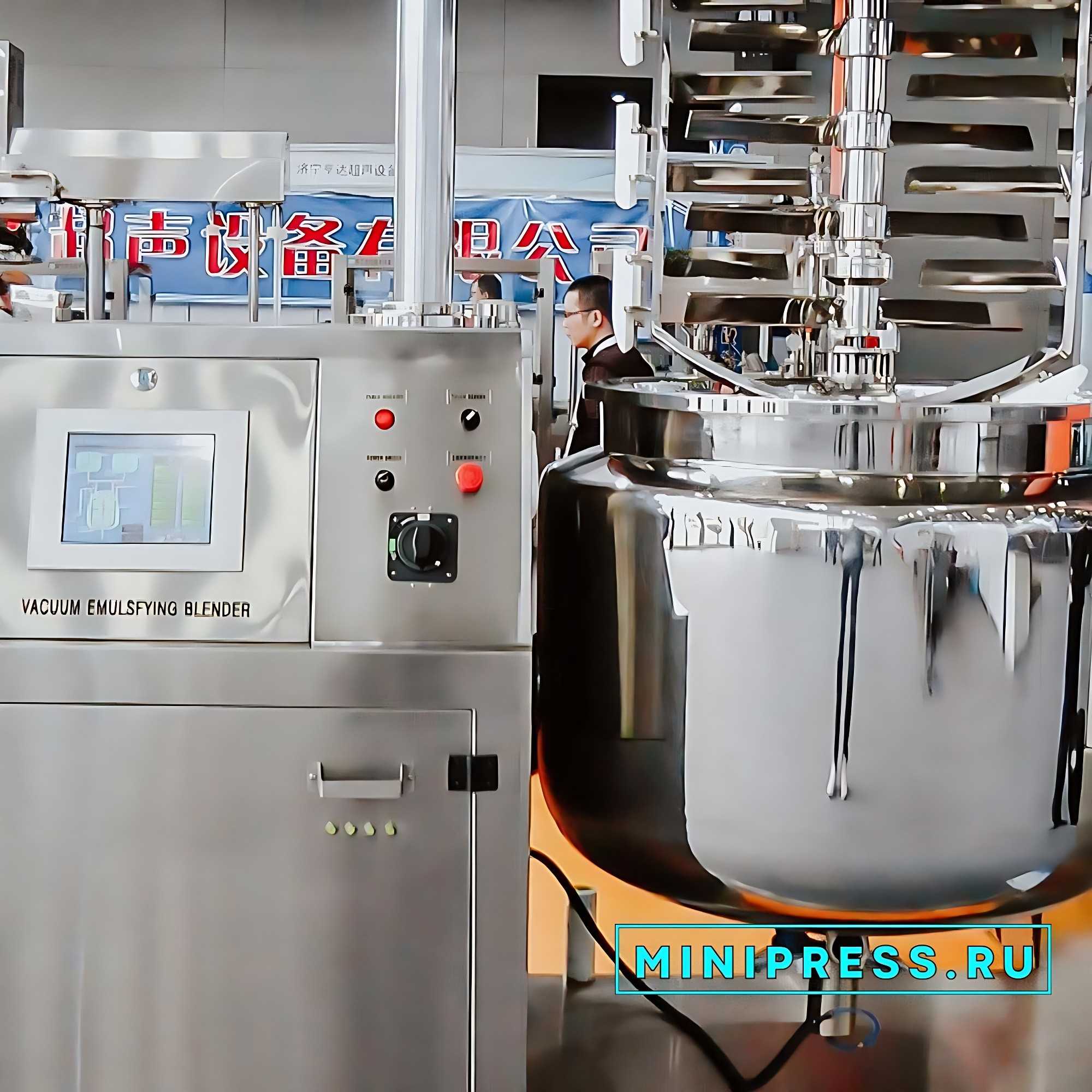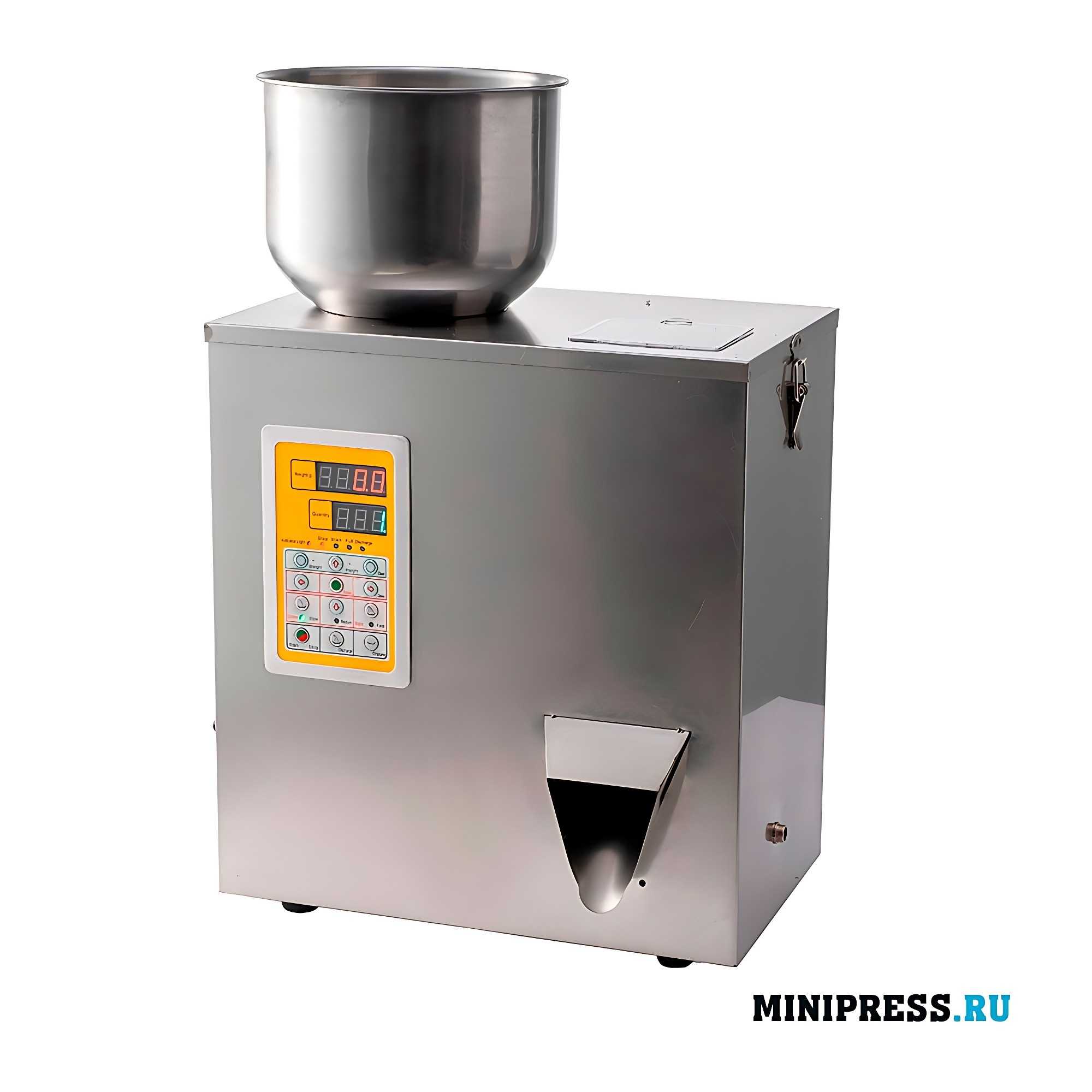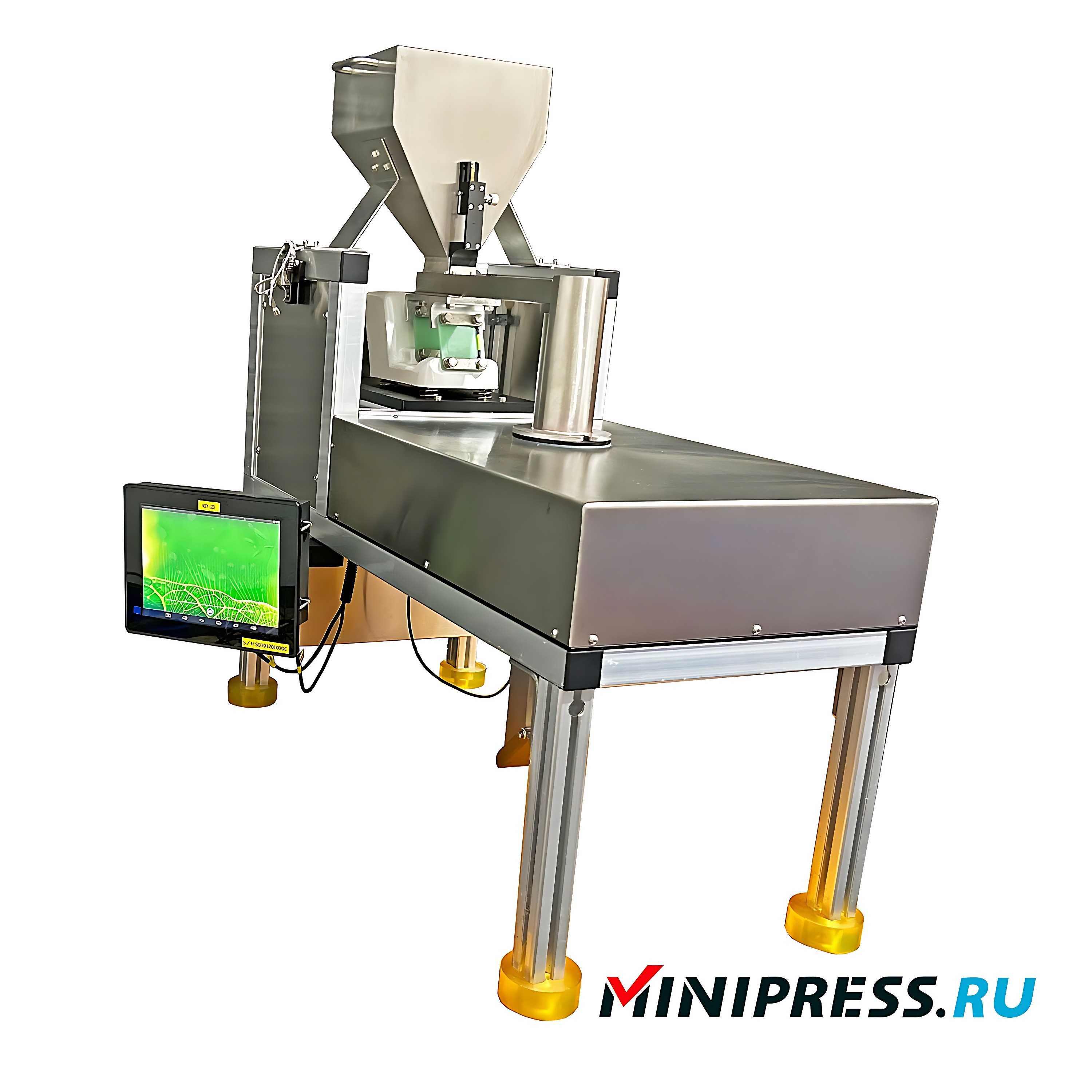 Video review of the model
Video review of the model
 Our service and customer service
Our service and customer service
Due to the combination of spherical particles and microcrystals, lactose has good compressibility. Sometimes the addition of small amounts of substances such as aerosil, calcium silicate (aerogel) makes the mixture suitable for pressing. Thus, the optimum amount of aerosil added to improve the flowability of the mixture is 0.05-1 %. The technology of tablet production by direct pressing method is that the drug substances are thoroughly mixed with the required amount of excipients and pressed on tablet machines. At present it can be said that granulation remains the main technological operation in the preparation of substances for tabletting. But direct pressing is increasingly being introduced into pharmaceutical production due to its clear economic advantages and the emergence of modern high-speed tablet presses with high pressing forces. Sometimes the tabletting process is carried out using pellets containing the required drug and excipients. Tabletizing (pressing) on tablet machines is carried out by a press tool consisting of a matrix and two punches. The matrix is a steel disk in which a cylindrical hole with a diameter of 3 to 25 mm is drilled. The cross section of the hole is equal to the diameter of the tablet.
The matrices are inserted into the corresponding holes of the table top – the work surface. In order to increase productivity, the dies can be double and triple socketed. Punches (upper and lower) are cylindrical rods (pistons) made of chromium-plated steel, which are inserted into the holes of the matrix from above and below and provide pressing of the tablet under pressure. Pressing surfaces of punches can be flat or concave (of different radius or curvature), smooth or with transverse grooves (notches), as well as with engraved inscription. Punches can be one-piece or prefabricated. A one-piece punch is a single piece with a pusher. There are two types of tablet machines: with a resting die and a movable feed hopper; with a movable die and a resting feed hopper. The first type of tablet machines are called eccentric, or crank (by the type of mechanism that drives the punches), or percussion (by the nature of the pressing force). Machines of the second type are called rotary, turret or carousel (by the nature of the movement of the die with a system of punches). Eccentric tablet machines (as simpler in their design) appeared earlier.
 Pharmaceutical Glossary
Pharmaceutical Glossary
 Technical specifications
Technical specifications
However, the vast majority of drugs are not able to spontaneously fill the matrix of the tablet machine due to a significant (more than 70%) content of fine fractions and irregularities in the surface of the particles, causing strong inter-particle friction. In these cases, auxiliary agents that improve the flow properties and belong to the class of sliding agents are added. Tablets of vitamins, alkaloids, acetylsalicylic acid, phenobarbital, ascorbic acid, sodium hydrocarbonate, streptocide, and phenacetin are prepared in this way. The mentioned characteristics are very important for the control of substances used in the technology of direct pressing, especially g large quantities, because the quality of tablets in this case will directly depend on the technological parameters of the tablet mass, its friability, pressability and compactability. It is experimentally established that the lower the concentration in the tablet mass of a component, the finer its particles should be. tHe can get a homogeneous tablet mass consisting of components with sharply different particle sizes. It is known that a system consisting of two fine powders forms more homogeneous and stable mixtures than a system in which the particles of one component are larger than the other. To obtain the optimal composition of the mixture of multicomponent drugs, it is desirable to observe the following conditions: the particle sizes of individual components should correspond to their concentration, the density of substances of individual components is desirable to select close to each other, the shape of the particles should be close to spherical. If the medicinal substance is suitable for the direct pressing process, it is tabletized using the usual excipients. If the drug substance is not suitable for direct pressing when using conventional excipients, excipients with sufficient binding effect on the particles are used, or granules of the drug substance with a binder suitable for direct pressing are used. Currently, tabletting without granulation (direct pressing) is carried out by the following methods: with the addition of excipients that improve the technological properties of the material; by forced feeding of the tabletting material from the feed hopper of the tabletting machine into the matrix; pre-directed crystallization of the pressed substance.
 Additional information
Additional information
Pre-directed crystallization is one of the most complex methods of obtaining drug substances suitable for pressing, which consists in achieving the tabletable substance in crystals of a given bulkiness, pressability and humidity by selecting certain crystallization conditions. The result is a crystalline drug substance with crystals of isodiametric shape, freely pouring out of the funnel and therefore easily subjected to volumetric dosing, which is a prerequisite for direct pressing. This method is used to obtain tablets of acetylsalicylic and ascorbic acid. To increase the compressibility of drug at direct pressing in the composition of the powder mixture add dry binders – most often microcrystalline cellulose (MCC) or polyethylene oxide (PEO). Due to its ability to absorb water and hydrate individual layers of tablets, MCC has a favorable effect on the process of drug release. With MCC, strong but not always well disintegrating tablets can be manufactured. It is recommended to add ulypra-amylopectin together with MCC to improve tablet disintegration. Copovidone (vinylpyrrolidone copolymer) has a small particle size, which results in improved plasticity and excellent dry binding capacity. The analysis of the presented binders shows that Collidon VA 64 fine has one of the best binding effects when tablets are obtained by direct pressing. In direct pressing it is recommended to use modified starches as binders, which enter into chemical interaction with drug substances, significantly affecting their release and biological activity. Often used milk sugar as a means of improving the bulkiness of powders, as well as granulated calcium sulfate, which has good bulkiness and provides the receipt of tablets with sufficient mechanical strength. Cyclodextrin is also used, which increases the mechanical strength of tablets and their disintegration.
In direct pressing, maltose is recommended as a substance that provides a uniform filling rate and has negligible hygroscopicity. A mixture of lactose and cross-linked polyvinylpyrrolidone is also used. Anhydrous lactose is capable of direct pressing and has good friability. It does not lose its tabletability properties even when ground to a fine powder, although its flowability is reduced. Spray-dried lactose consists of microcrystals – particles of amorphous and vitreous structure.
Order status tracking
PU-420 flow-pack packaging machine along with 500 kg packaging , delivery to Houston. Please confirm the delivery time. 27/12/2025 22:30
Good afternoon Mia, your shipment has left. Arrival time in the interval from 10:00-12:00. The driver will call you back later. Please organize prompt unloading. 27/12/2025 22:32
How to contact you for shipment tracking ? Industrial vibrating screen VS-04. 27/12/2025 22:40
Good afternoon, Penelope, My WhastApp is +79853643808, Manager Natalia +79153808881 during business hours and except weekends. 27/12/2025 22:41
Rotary tablet press RZK-25 I want to order with delivery to Berlin 27/12/2025 22:50
Good day, Benjamin We have checked the information on your request, unfortunately the factory has stopped production of this model of equipment. Send to the mail a description of your task, or contact your manager. We will help in any case with the choice. 27/12/2025 22:51
When is the SL-20 soft strip tablet packaging machine scheduled to be delivered to Mont St. Michel ? 27/12/2025 23:00
Hello Ethan, Expect tomorrow until 16:30. Once received, please let us know. 27/12/2025 23:02
You have to pay for delivery to Mostar over and above the delivery amount in the contract ? 27/12/2025 23:10
Sebastian, The catalog shows the price with door delivery. The unloading of the equipment, upon receipt of the shipment, will be charged to you separately. 27/12/2025 23:14
We're from New Jersey, we paid for the equipment on your invoice yesterday. Has the payment been received? How long will it take to deliver to us? 27/12/2025 23:20
John, hello. Payment is credited to our settlement account. Term of manufacture of your equipment by the factory 20 working days, delivery from the factory to our warehouse in the USA 1 month, delivery from the warehouse in Jacksonville 15 calendar days. 27/12/2025 23:20
HX-6 Plastic Tube Filling and Sealing Machine in Tbilisi? Price delivery terms and conditions 27/12/2025 23:30
Zoey, good afternoon, we have received your request by email. In 15 minutes we will send you our quotation for this model of equipment. 27/12/2025 23:31
We received our order (BG-150 film coating boiler) in the box there was no spraying nozzle !!! 27/12/2025 23:40
Hello Noah, we checked with the factory. Your nozzle was not received in time for the shipment of the main machine. We will now deliver it to you by DHL express mail. 27/12/2025 23:41
Good afternoon! semi-automatic liquid filling machine in barrels DF-13 , a copy of the payment is sent to the post. Start the order to work. 27/12/2025 23:50
Ella, good afternoon! We have seen your payment, we receive SMS from the bank. Please send drawings of barrels and answers to our questions in correspondence. 27/12/2025 23:53
Vacuum powder conveyor QV-01 quantity of 3 pieces, need discount and delivery to Corpus Christi. 28/12/2025 00:00
Good day John, in our catalog all prices are given including delivery to the door of the customer. If you buy 3 pieces we will make a discount of 7%. Delivery to Corpus Christi is included in the price. 28/12/2025 00:01
- EQUIPMENT FOR PACKAGING TABLETS AND CAPSULES IN PLASTIC BOTTLES
- HIGH-PRECISION DOSING MACHINES POWDER FILLING MACHINES
- EQUIPMENT FOR COATING TABLETS
- BOTTLE FILLING AND CAPPING EQUIPMENT
- EQUIPMENT FOR PACKING POWDERS INTO VIALS
- MACHINES FOR THE PRODUCTION OF SUPPOSITORIES
- EQUIPMENT FOR THE PRODUCTION OF TABLETS
- EQUIPMENT FOR COUNTING AND PACKAGING TABLETS AND CAPSULES IN BOTTLES
- EQUIPMENT FOR WASHING AND STERILIZING BOTTLES
- EQUIPMENT FOR FILLING CREAMS AND SEALING PLASTIC TUBES
- SPRAY DRYING EQUIPMENT FOR SUSPENSIONS
- EQUIPMENT FOR PRINTING LOGO ON TABLETS AND CAPSULES
- MACHINES FOR FORMING AND FILLING PLASTIC AMPOULES
- EQUIPMENT FOR FILLING HARD GELATIN CAPSULES WITH POWDER
- AUTOMATIC EQUIPMENT FOR REMOVING TABLETS AND CAPSULES FROM BLISTERS
- EQUIPMENT FOR FILLING AND SEALING GLASS AMPOULES
- EQUIPMENT FOR POLISHING AND DEDUSTING TABLETS AND CAPSULES
- EQUIPMENT FOR HOMOGENIZING CREAMS AND OINTMENTS
- AUTOMATIC PHARMACEUTICAL CENTRIFUGES
- EQUIPMENT FOR VACUUM TRANSPORTATION OF POWDERS
- POWDER GRANULATION EQUIPMENT
- EQUIPMENT FOR EFFICIENT MIXING OF POWDERS
- EQUIPMENT FOR AUTOMATIC BOTTLE FEEDING FOR FILLING LINES
- EQUIPMENT FOR SCREW FEEDING OF POWDERS
- AUTOMATIC EQUIPMENT FOR BLISTER PACKAGING
- AUTOMATIC EQUIPMENT FOR SELF-ADHESIVE LABELS ON PACKAGING
- EQUIPMENT FOR PACKING TEA INTO TEA BAGS WITH THREAD AND LABEL
- EQUIPMENT FOR INDUCTION SEALING OF ALU FOIL BOTTLES
- EQUIPMENT FOR WRAPPING CARDBOARD BOXES WITH CELLOPHANE
- EQUIPMENT FOR APPLYING THE EXPIRATION DATE AND BATCH NUMBER TO PRODUCTS
- EQUIPMENT FOR THE MANUFACTURE AND PACKAGING OF WET ALCOHOL WIPES
- EQUIPMENT FOR VACUUM PACKAGING IN PLASTIC BAGS
- EQUIPMENT FOR PACKAGING PRODUCTS IN A FLOW PACK
- EQUIPMENT FOR METAL DETECTOR IN GELATIN CAPSULES AND TABLETS
- EQUIPMENT FOR PACKAGING BULK MATERIALS IN PLASTIC BAGS
- EQUIPMENT FOR PACKAGING TABLETS IN STRIPS AND TUBES
- EQUIPMENT FOR WEIGHT CONTROL AND SORTING OF CARDBOARD BOXES WITH MEDICINE
- EQUIPMENT FOR FILLING AND PACKAGING HERBAL TINCTURES
- FLOW-PACK PACKAGING MACHINES
- EQUIPMENT FOR FILLING LIQUIDS IN PLASTIC AND METAL BARRELS
- EQUIPMENT FOR PACKAGING FOOD PRODUCTS IN DOY-PACK PACKAGES
- DESKTOP EQUIPMENT FOR HIGH-SPEED EMULSION PRODUCTION
- SEMI-AUTOMATIC EQUIPMENT FOR FILLING GELATIN CAPSULES
- PERISTALTIC PUMPS DISPENSERS
- EQUIPMENT FOR LABORATORY TESTING OF MEDICINES
- EQUIPMENT FOR AUTOMATIC DOSING OF CREAMS AND OINTMENTS
- EQUIPMENT FOR VIBRATING SIEVING OF POWDERS
- EQUIPMENT FOR THE PRODUCTION OF FISHING BOILIES
- MANUAL EQUIPMENT FOR FILLING GELATIN CAPSULES WITH POWDER
- SEMI-AUTOMATIC EQUIPMENT FOR BLISTER PACKAGING
- EQUIPMENT FOR MIXING LIQUIDS WITH MICROWAVE HEATING
- MACHINES PRINTING EXPIRATION DATE AND LOT NUMBER
- EQUIPMENT FOR POWDERING PHARMA RAW MATERIALS
- DESKTOP EQUIPMENT FOR LIQUID DOSING
- DESKTOP EQUIPMENT FOR MIXING POWDERS
- AUTOMATIC EQUIPMENT FOR REMOVING TABLETS AND CAPSULES FROM BLISTERS
- EQUIPMENT FOR FILLING HARD GELATIN CAPSULES WITH POWDER
- EQUIPMENT FOR POLISHING AND DEDUSTING TABLETS AND CAPSULES
- MACHINES FOR THE PRODUCTION OF SUPPOSITORIES
- BOTTLE FILLING AND CAPPING EQUIPMENT
- EQUIPMENT FOR PACKING POWDERS INTO VIALS
- EQUIPMENT FOR FILLING AND SEALING GLASS AMPOULES
- EQUIPMENT FOR COATING TABLETS
- EQUIPMENT FOR FILLING CREAMS AND SEALING PLASTIC TUBES
- SPRAY DRYING EQUIPMENT FOR SUSPENSIONS
- EQUIPMENT FOR PACKAGING TABLETS AND CAPSULES IN PLASTIC BOTTLES
- MACHINES FOR FORMING AND FILLING PLASTIC AMPOULES
- EQUIPMENT FOR WASHING AND STERILIZING BOTTLES
- EQUIPMENT FOR COUNTING AND PACKAGING TABLETS AND CAPSULES IN BOTTLES
- EQUIPMENT FOR THE PRODUCTION OF TABLETS
- HIGH-PRECISION DOSING MACHINES POWDER FILLING MACHINES
- EQUIPMENT FOR PRINTING LOGO ON TABLETS AND CAPSULES
- EQUIPMENT FOR AUTOMATIC BOTTLE FEEDING FOR FILLING LINES
- EQUIPMENT FOR VACUUM TRANSPORTATION OF POWDERS
- EQUIPMENT FOR SCREW FEEDING OF POWDERS
- EQUIPMENT FOR HOMOGENIZING CREAMS AND OINTMENTS
- POWDER GRANULATION EQUIPMENT
- EQUIPMENT FOR EFFICIENT MIXING OF POWDERS
- AUTOMATIC PHARMACEUTICAL CENTRIFUGES
- FLOW-PACK PACKAGING MACHINES
- EQUIPMENT FOR VACUUM PACKAGING IN PLASTIC BAGS
- EQUIPMENT FOR INDUCTION SEALING OF ALU FOIL BOTTLES
- EQUIPMENT FOR PACKAGING TABLETS IN STRIPS AND TUBES
- EQUIPMENT FOR PACKAGING PRODUCTS IN A FLOW PACK
- EQUIPMENT FOR PACKAGING FOOD PRODUCTS IN DOY-PACK PACKAGES
- EQUIPMENT FOR METAL DETECTOR IN GELATIN CAPSULES AND TABLETS
- EQUIPMENT FOR WRAPPING CARDBOARD BOXES WITH CELLOPHANE
- EQUIPMENT FOR THE MANUFACTURE AND PACKAGING OF WET ALCOHOL WIPES
- EQUIPMENT FOR FILLING LIQUIDS IN PLASTIC AND METAL BARRELS
- EQUIPMENT FOR APPLYING THE EXPIRATION DATE AND BATCH NUMBER TO PRODUCTS
- EQUIPMENT FOR PACKAGING BULK MATERIALS IN PLASTIC BAGS
- EQUIPMENT FOR FILLING AND PACKAGING HERBAL TINCTURES
- EQUIPMENT FOR WEIGHT CONTROL AND SORTING OF CARDBOARD BOXES WITH MEDICINE
- AUTOMATIC EQUIPMENT FOR BLISTER PACKAGING
- AUTOMATIC EQUIPMENT FOR SELF-ADHESIVE LABELS ON PACKAGING
- EQUIPMENT FOR PACKING TEA INTO TEA BAGS WITH THREAD AND LABEL
- EQUIPMENT FOR POWDERING PHARMA RAW MATERIALS
- EQUIPMENT FOR MIXING LIQUIDS WITH MICROWAVE HEATING
- EQUIPMENT FOR LABORATORY TESTING OF MEDICINES
- MACHINES PRINTING EXPIRATION DATE AND LOT NUMBER
- EQUIPMENT FOR VIBRATING SIEVING OF POWDERS
- SEMI-AUTOMATIC EQUIPMENT FOR FILLING GELATIN CAPSULES
- MANUAL EQUIPMENT FOR FILLING GELATIN CAPSULES WITH POWDER
- DESKTOP EQUIPMENT FOR HIGH-SPEED EMULSION PRODUCTION
- DESKTOP EQUIPMENT FOR MIXING POWDERS
- SEMI-AUTOMATIC EQUIPMENT FOR BLISTER PACKAGING
- EQUIPMENT FOR THE PRODUCTION OF FISHING BOILIES
- PERISTALTIC PUMPS DISPENSERS
- DESKTOP EQUIPMENT FOR LIQUID DOSING
- EQUIPMENT FOR AUTOMATIC DOSING OF CREAMS AND OINTMENTS
 8216
8216 7648835
7648835



